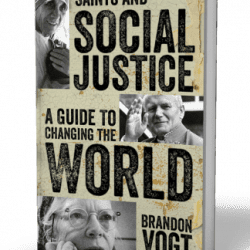The Compendium of the Social Doctrine of the Church categorizes the rights of workers according to the following taxonomy (301-304):
(1) The dignity of workers and respect for their rights. It follows that workers have the right to: (i) a just wage, (ii) rest, (iii) a working environment not harmful to either physical health or moral integrity, (iv) respect for conscience and personal dignity, (v) subsidies for unemployed workers and their families; (vi) a pension and insurance for old age, sickness, and work-related accidents; (vii) social security connected with maternity; (viii) assemble and form associations and unions. Note that the call for a living wage extends into periods of unemployment, sickness, or disability. Elsewhere, the Compendium notes that making the family wage a concrete reality may require various social provisions such as family subsidies (#250).
(2) The right to fair remuneration and income distribution. Indeed, “remuneration is the most important means for achieving justice in work relationships”. Accordingly, workers should be paid a just wage, a living wage, noting that this goes beyond the notion of unrestrained labor markets since “the simple agreement between employee and employer with regard to the amount of pay to be received is not sufficient for the agreed-upon salary to qualify as a just wage”. It is also crucially important (and no accident) that the Church puts the importance of an equitable distribution of income on par with the right to fair pay. For “the economic well-being of a country is not measured exclusively by the quantity of goods it produces but also by taking into account the manner in which they are produced and the level of equity in the distribution of income.” This will call for forms of progressive taxation and redistributive policies.
(3) The right to strike. The option to strike is legitimate “when it cannot be avoided, or at least when it is necessary to obtain a proportionate benefit, when every other method for the resolution of disputes has been ineffectual.” Note that striking is inherently a collective process or a “concerted refusal on the part of workers to continue rendering their services, for the purpose of obtaining by means of such pressure exerted on their employers, the State or on public opinion either better working conditions or an improvement in their social status.”
What about the relationship between capital and labor, which relates especially to the second point above? Well, the Compendium affirms that labor has an intrinsic priority over capital, and that the relationship must ideally be a complementary one (#277). However, the relationship is frequently antagonistic (#279):
‘The relationship between labour and capital often shows traits of antagonism that take on new forms with the changing of social and economic contexts. In the past, the origin of the conflict between capital and labour was found above all “in the fact that the workers put their powers at the disposal of the entrepreneurs, and these, following the principle of maximum profit, tried to establish the lowest possible wages for the work done by the employees”. In our present day, this conflict shows aspects that are new and perhaps more disquieting: scientific and technological progress and the globalization of markets, of themselves a source of development and progress, expose workers to the risk of being exploited by the mechanisms of the economy and by the unrestrained quest for productivity.’
So while the Church acknowledges the primacy of the market system in terms of employment creation, it does not accept laissez-faire answers to the underlying principles of Catholic social teaching in this area.
















